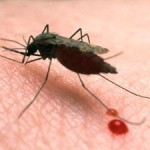
Asunción, Paraguay / Bonn – The rich grasslands in South America, home to one of the world’s most valuable ecosystems, is fast disappearing and migratory grassland birds, which play an important role by dispersing seeds and controlling insects, are also rapidly declining in Argentina, Bolivia, Brazil, Paraguay and Uruguay.
In order to reverse this trend, the Convention on Migratory Species of the United Nations Environment Programme (UNEP/CMS), in collaboration with BirdLife International and Asociación Guyra Paraguay, convened a one-day meeting in Asunción, Paraguay, where Government representatives, scientists and conservationists adopted an action plan for urgent conservation measures to ensure the survival of these birds and their habitats.
CMS Executive Secretary Elizabeth Maruma Mrema said, “The CMS action plan does not only address threats to migratory grassland birds in South America. By preserving their habitat, we safeguard many other endangered species. At the same time, we help mitigating climate change because it aims to conserve the grasslands that produce oxygen and act as carbon sinks.”
Grassland birds are the gardeners of this formerly rich ecosystem. However, their habitats in Argentina, Bolivia, Brazil, Paraguay and Uruguay have been destroyed in recent years due to agricultural and aqua-cultural activities as well as the timber industry.
Agriculture, in particular the cultivation of soya, has put these important ecosystems at risk as pollution from pesticides and other agro-chemicals are carried by drainage and run-off directly into marshes and wetlands.
In addition, the natural grasslands are being converted into pastures for cattle and meat export to the world’s markets and pastures are frequently burnt to accelerate the food supply for grazing cattle.
The afforestation of pampas with Eucalyptus and pine trees also contributes to wide-spread habitat loss. This monoculture of non-endemic trees drains valuable wetlands, crucial for species conservation, to satisfy the global demand for paper.
The grassland bird species covered under the CMS agreement are highly-prized as caged song birds which have been illegally captured and kept in cages in private households all over the world.
A major priority of the CMS action plan is protecting and managing the habitats for these migratory grassland birds. New protected areas will be identified to create a viable network of ecosystems and the conservation of the birds needs to be included in their management plans.
Financial incentives will also be made available to local cattle ranchers who must take into account the ecological needs of the overall species in the grasslands, with particular regard to the critical habitat for the endangered ones.
Monitoring and research of grassland biodiversity will now be coordinated among the countries to collect data on distribution, population counts, abundance and the conservation status of the birds, frogs, butterflies and other insects. This will help to close knowledge gaps on migration routes of the birds and conservation needs of their habitats. In addition, an international bird ringing programme is implemented, where small, individually numbered tags are attached to the birds’ legs to track their movements and identify threats along their flyways.
Threat assessment is another component of the CMS action plan. Studies will be conducted in the next five years to determine the impact of chemicals and fertilizers on bird populations. The volume and geographical scale of illegal trade in bird species needs to be assessed to consider countermeasures.
Awareness raising and capacity building are necessary to involve local communities to ensure long-term results. Training courses on best practices and tailored conservation will target educators, journalists, producers and rural associations. Campaigns will promote appreciation of endangered bird species and their habitats and discourage the illegal trade in the species.
International cooperation between the countries needs to be enhanced towards developing a legal framework for the preservation of grasslands in unprotected areas. In order to reduce direct threats to grasslands, countries will develop policy guidelines for fire management.
Migratory grassland birds are even more vulnerable to habitat loss than sedentary species. As a consequence, they are dependent on conservation action at breeding, wintering and migration stop-over sites.
The Buff-breasted Sandpiper breeds in summer along arctic coasts from central Alaska, USA to Canada and covers a distance of 20,000 kilometers to its wintering sites in South America to feed and recharge its batteries.
The Saffron-cowled Blackbird has declined due to man-made threats including stock-raising, cultivation, pesticides, burning, pine and Eucalyptus plantations, drainage and settlement. Population estimates today range from 2,500-10,000 mature individuals.
The adoption of the action plan marks the beginning of a series of critical conservation activities to the benefit of the species. Five countries will increase their collaboration to restore population numbers and critical habitats in South America to save these living exotic jewels.














